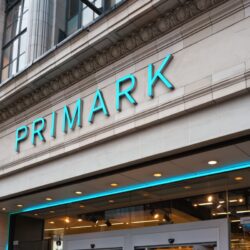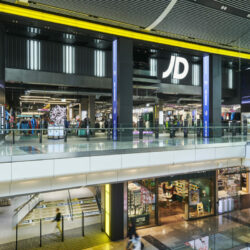Angela Spindler likes to refer to her company as “one of retail‘s best kept secrets”, and even she had to conduct some research on The Original Factory Shop before accepting the role of CEO at the firm back in January 2009.
Despite boasting a portfolio of 176 UK stores and its senior management identifying 500 to 600 potential locations nationwide for its retail offering, the non-food discounter remains under the radar of many due to its focus on opening outside primary centres.
Favouring towns with isolated catchment areas and relatively low populations, the company has been able to steadily increase its presence over the last decade by becoming integral to the communities in which its stores reside.
It is in the last two years however, following Woolworths‘ collapse at the start of 2009, that the business has really started to establish itself as a regular go-to place in smaller high streets up and down the country for people looking for fashion, homewares and electrical appliances.
Many of the units it takes on have been left vacant by failed businesses and some stores have even been opened in old garages and petrol stations, so it is effectively regenerating regions by its very presence.
And in areas, including the likes of Frodsham in Cheshire, Stocksbridge in South Yorkshire and, most recently Ramsey near Peterborough, the value chain benefits from the convenience factor it offers its customers.
“I always have to use the phrase “near to” when talking about the towns we are opening in,” Spindler told Retail Gazette.
“Commercially, targeting smaller towns is a good strategy because people like the option of shopping locally as part of their repertoire of shopping experiences.
“Our shoppers will also visit supermarkets, a mall or a retail park – we are just part of their repertoire but a really important one for them.”
Part of the attraction for The Original Factory Shop customers is the plethora of clearance products up for sale, which account for around 30 to 40 per cent of all stock depending on the time of the year.
The company‘s roots are in Keighley, Yorkshire, where it was established in 1969 as part of Marks & Spencer (M&S) supplier Peter Black‘s, and to this day, from its new headquarters in Burnley, it sells overstock from retail giants such as Next and M&S.
Although not in direct competition, it follows a similar model to fashion specialist TK Maxx in offering significant reductions from the recommended retail price, but they clearly have different target markets.
“We are more high street rather than designer brand,” Spindler explained.
“TK Maxx sells high-end brands for mid-market prices, while we‘re taking mid-market brands and selling them at discount prices.”
Sales were up 16.4 per cent annually to £158 million in the last full financial year, fuelled by rapid store growth in the wake of Woolies‘ demise, although the company has not been immune to the difficult trading conditions encountered since the beginning of 2011.
“Due to our product range having a strong focus on fashion, we were affected by the pretty miserable summer weather and the warm autumn conditions, but that will always impact seasonal products,” the CEO admitted.
“Since the start of July we‘re in positive territory though, with trading up on a like-for-like basis.
“Online is always the biggest store now even though it‘s only been going since April.
“In a store we would have thousands of SKUs and online we only have 600, but in a typical week the internet channel is contributing to two per cent of our growth.”
Growth driven by internet sales is a familiar tale frequently retold at many of today‘s multichannel retai
RELATED STORIES

















